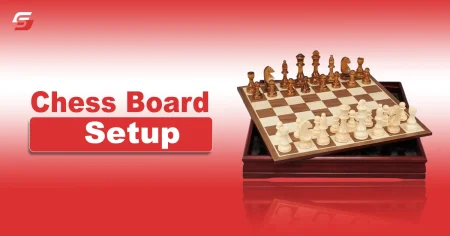As someone who has spent countless hours studying the chessboard, I can tell you that chess is far more than a game. It is a battlefield of strategy, foresight, and precise calculation. While most matches unfold over many moves, there’s a clever tactic called the “4-move checkmate.”
This strategy of playing chess allows you as White to seize an early advantage if your opponent isn’t careful. In this guide, I’ll walk you through exactly how to win a chess game in 4 moves, showing each step on the board. Further, I’ll explain the reasoning behind every move, so you can play like a confident strategist from the very first turn.
Key Takeaways on Winning Chess in 4 Moves
1. Win in 4 moves with the Scholar’s Mate, a beginner tactic.
2. Attack Black’s weak f7 pawn with your queen and bishop.
3. Moves: 1. e4 e5 → 2. Bc4 → 3. Qh5 → 4. Qxf7# (checkmate).
4. Works only if the opponent leaves their king vulnerable.
What’s a 4-Move Checkmate?
The 4-move checkmate, sometimes called the “Scholar’s Mate,” is one of the fastest ways to win a chess game. It involves coordinating your Queen and Bishop to target the weak f7 squares, the most vulnerable point in Black’s position at the start of the game.
- Why f7? In chess, the f7 square (for Black) is only protected by the king. Capturing it early can lead to a checkmate if your opponent doesn’t defend properly.
How to Win a Chess Game in 4 Moves: Step-by-Step Guide
Here’s the exact sequence to follow:
1: Open with e4
- Move your King’s Pawn two squares forward: e4.
- This controls the center, opens lines for your Queen and Bishop, and is the first step in most openings.
2: Develop Your Bishop
- Move your Bishop to c4: Bc4.
- Your Bishop now targets the f7 square, putting immediate pressure on Black’s weakest point.
3: Queen Out
- Move your Queen to h5: Qh5.
- This sets up the threat of checkmate on f7. At this point, if your opponent is unaware, they’re in danger of a very early defeat.
4: Checkmate
- If Black doesn’t defend properly (for example, moves a pawn like g6 or develops slowly), move your Queen to f7: Qxf7#.
- This is checkmate. The king has no escape, and the game is over in just 4 moves.
Common Mistakes That Fail 4 Move Checkmate
Even though the 4-move checkmate is simple, beginners often fail due to:
- Exposing your Queen too early: Moving the Queen out without support can make it vulnerable.
- Ignoring development: Don’t rely only on quick tricks; proper piece development is essential.
- Assuming your opponent will not defend: Experienced players can easily counter the Scholar’s Mate by moving Nc6 or Nf6 to block threats.
How to Defend Against the 4-Move Checkmate as Black
If your opponent tries this on you, here’s how to defend:
- Move the Knight to f6: This blocks the Queen and protects f7.
- Move the Pawn to e6: This defends f7 and opens lines for your Bishop.
- Develop pieces actively: Knights and Bishops should be ready to counterattack.
Tips to Win Quickly as White
- Study openings: Understanding the first few moves can help you predict your opponent’s reactions.
- Practice tactical awareness: Recognize weak points like f7 and g2.
- Play against beginners first: The 4-move checkmate is more likely to succeed against inexperienced players.
- Don’t rely on tricks alone: Learn solid openings for long-term improvement.
Try this strategy on your friends in online 2-player chess platforms and let them know who is the boss here. And yes, don’t forget to give me credit in front of them!
What People Also Ask About 4 Move Checkmate
A: Usually not. Experienced players know how to defend f7 and counter early threats.
A: Yes, but it requires White to make early mistakes. Similar tactics can be applied from Black’s side.
A: Only as a learning tool. It’s better to focus on fundamentals like control of the center and piece development.











